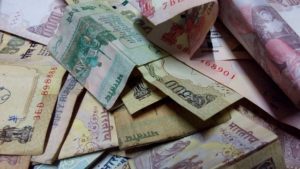 In general, money consists of coins, paper money and withdrawable bank deposits. Bank deposits are part of money supply because one can write cheques on these accounts and the cheque possesses the essential qualities of money. Moreover, increasingly credit cards and electronic cash are becoming an important component of the payment system at least after the demonetization and promotion of cashless India. Continuing financial innovations are causing widening of the definition of money.
In general, money consists of coins, paper money and withdrawable bank deposits. Bank deposits are part of money supply because one can write cheques on these accounts and the cheque possesses the essential qualities of money. Moreover, increasingly credit cards and electronic cash are becoming an important component of the payment system at least after the demonetization and promotion of cashless India. Continuing financial innovations are causing widening of the definition of money.The Reserve Bank of India (RBI) publishes 4 measures of monetary aggregates in India. These measures define money based on progressive liquidity or spendability.
M1 = Currency held by the public (currency notes and coins) + Demand deposits with the banking system (on current and saving bank accounts) + Other demand deposits with RBI.
M2 = M1 + saving deposits with Post office savings banks.
M3 = M1 + time deposits with the banking system.
M4 = M3 + total deposits with the post office savings organization (excluding National Savings Certificates).
M1 represents the most liquid form of money among the four money stock measures adopted by RBI. As we proceed from M1 to M4, the liquidity gets reduced. In other words, M4 possesses the lowest liquidity among all these measures. The importance of all these four money stock measures varies from the point of view of monetary policy.
Share and Subscribe to Sulthan Academy. Leave your queries and feedback in the comment section below.
Share and Subscribe to Sulthan Academy. Leave your queries and feedback in the comment section below.



